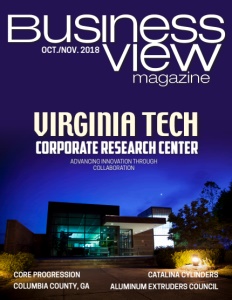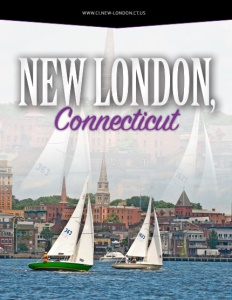New London, Connecticut
Always improving
Business View Magazine interviews representatives from New London, CT, as part of our focus on best practices of municipal governments.
New London, Connecticut is a seaport city located at the mouth of the Thames River in New London County. It is bounded on the west and north by the town of Waterford, on the east by the Thames River and Groton, and on the south by Long Island Sound. In terms of land area, New London is one of the smallest cities in Connecticut – of the whole 10.76 square miles, nearly half is water; only 5.54 square miles is land.
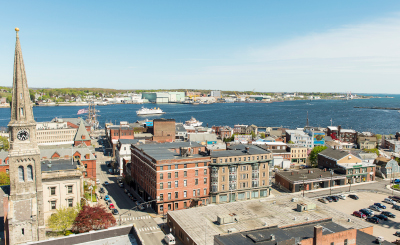 Once the domain of the Pequot Indians, the first English settlement in the area was founded by John Winthrop, Jr. in 1646. During the American Revolution, New London became a base of American naval operations, as its harbor was considered to be the best deep water harbor on Long Island Sound. Beginning in the 19th century, New London was one of the world’s busiest whaling ports, along with Nantucket and New Bedford, Massachusetts. The city subsequently became home to other shipping and manufacturing industries, as well as the home of the United States Coast Guard Academy.
Once the domain of the Pequot Indians, the first English settlement in the area was founded by John Winthrop, Jr. in 1646. During the American Revolution, New London became a base of American naval operations, as its harbor was considered to be the best deep water harbor on Long Island Sound. Beginning in the 19th century, New London was one of the world’s busiest whaling ports, along with Nantucket and New Bedford, Massachusetts. The city subsequently became home to other shipping and manufacturing industries, as well as the home of the United States Coast Guard Academy.
Today, New London is a city of approximately 27,000 that offers a unique range of cultural, historical, recreational, and educational amenities that make the city a great place to live and work. The City contains a variety of commercial areas combined with a collection of intimate residential neighborhoods and a lively downtown. A revitalized waterfront features the new Thames Heritage Maritime Park and Water Taxi; a new kind of state park without boundaries. The Park is a collection of almost 20 national and historic sites along the shores of the Thames River, linked by a water taxi, that tell the stories that shaped our nation over the past 400 years.
Recently, Business View Magazine sent a series of questions to three of the city’s administrative officers – Community Development Coordinator, Tom Bombria; City Planner, Sybil Tetteh; and Grants Manager, Elizabeth Nocera – to find out about current projects and initiatives under their purview. Afterwards, a follow-up call was made to solicit additional information on those topics. The following edited transcript is a combination of their written responses, as well as their subsequent comments about those agenda items.
BVM: In the area of sustainability, can you report on some of the city’s notable initiatives and projects?
Tetteh: “New London is participating in the Sustainable Connecticut Program to inspire the community to support, sustain, and restore the natural resources that are integral to the health and resilience of the City. A Sustainability Commission, staffed by the City Planner, meets monthly to establish goals and attain measurable objectives towards a sustainable New London. In the first year of the program, New London has successfully submitted an application for the bronze certification with over 300 points out of a necessary 200 after completing actions in each of the eight categories. Most of those credits are derived from our local economic initiatives, health and housing diversity, dynamic and resilient planning, efficient physical infrastructure and operations, sufficient and inclusive public services, our land and natural resource stewardship, and our initiatives with transportation.
“The city recently took the initiative of changing all of our street light bulbs to LED (Light Emitting Diode). In 2016, Public Works administered the conversion of 2200 HPS (High Pressure Sodium) “Cobra Head” style streetlights, and 388 Decorative streetlights, to LED fixtures. This initiative has resulted in an estimated $175,000 annual savings in cost of electricity.
“The recent redesign and construction of two municipal parking lots featured innovative design and functioning elements which included center islands serving as ‘rain gardens,’ or storm-water collection basins. Also included was the use of “Silva cells” (sub-grade plastic cages) to provide a healthy growing environment for newly planted trees. A key component of the project is introducing traffic calming and pedestrian safety elements to the area. The City has two electrical vehicle charging stations and more are planned for the near future.
“The city received an Urban Forestry Grant from the State of Connecticut Department of Energy and Environmental Protection to conduct a real-time tree survey and invasive species survey for use in developing a city-wide Urban Forestry and Invasive Species Management Plan. This innovative project partners with the Connecticut College Arboretum and engages student interns in field work, data collection, and plan development. We have also partnered up with F.R.E.S.H. New London, which promotes healthy eating as well as urban farming within the city.”
Bombria: “We have also partnered up with local business programs like C-PACE (Commercial Property Assess Clean Energy). C-PACE is an innovative financing solution to make green energy upgrades accessible. The Connecticut Green Bank is funded through the state; it offers 100 percent financing for energy improvements, so building owners can modernize their buildings and lower energy costs. The payment is tied up to their property tax, which makes it a secure payment system. Low interest capital can be raised from the private sector with no government financing required. This arrangement spreads the cost of clean energy improvements – such as energy efficient boilers, upgraded insulation, new windows, or solar installations – over the expected life of the measure.”
Nocera: “Our SMART program, which stands for Save Money and Reduce Trash, is a State of Connecticut initiative to reduce the amount of trash and increase the amount of recycling that cities and municipalities are able to collect. We received an initial grant of about $54,000; the first half of which has gone towards public education, which is a critical part of this model. The State of Connecticut contracted with Zero Waste, the state consultants that are helping the individual municipalities through the process. Essentially, the City’s current collection is a large green container for trash and a smaller blue container for recycling. The whole initiative is to turn that around, where the larger container will be for recycling to encourage the public about recycling. The city’s public education efforts are ongoing and the City Council has appointed a Solid Waste Management Task Force to further study the issue and continue to explore alternative cost-effective measures to reduce solid waste. ”
BVM: Can you report on any major infrastructure projects?
Nocera: “We are located at the mouth of the Thames River and Long Island Sound. So, stormwater management and coastal resiliency is a very important issue for our community. In 2008, New London was one of three communities in the State of Connecticut that received a $240,000 grant from the Connecticut Department of Environmental Protection to study how stormwater is managed. After a pilot study, we were able to come out with a number of recommendations that helped move our community forward. At the completion of the study, the City formally adopted the stormwater management ordinance, which then allowed the City to form a brand new stormwater authority, which was just established in July, 2018. While it’s beginning its work in terms of how it will manage stormwater, we’ve taken the initial steps to get the community onboard. The City is also anticipating notification of funding from the Long Island Sound Futures Fund to hire a consultant to develop a Natural Resource and Watershed Management Plan. The City is mindful of taking a proactive part to ensure that the Sound and River remain healthy and protected.”
Bombria: “The New London State Pier covers nearly 30 acres and has two piers with direct rail and deep-water access. Approximately 100 miles south of Boston and 130 miles northeast of New York City, it is located next to major highways serving the Northeast. State Pier is located near the major shipyards maintained by Electric Boat and the U.S. Naval Submarine Base in Groton.
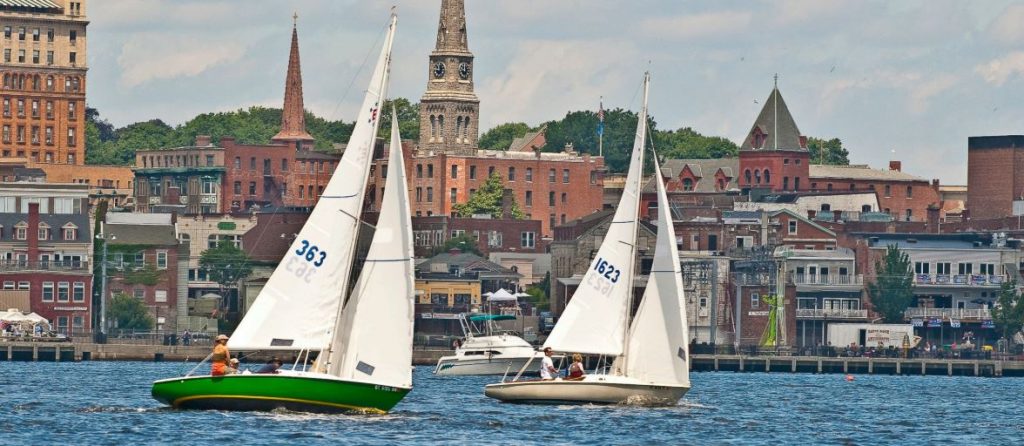
“The State of Connecticut recently developed the Connecticut Port Authority to run the State Pier. And, this past May, Governor Malloy announced a $15 million investment at State Pier to be used for infrastructure improvements and to help ready the pier for future use by the burgeoning offshore wind industry. State officials have said the pier could accommodate assembly of wind turbines and their bases while providing the space for staging the extremely large components for delivery to off-shore locations. The funding will provide for the demolition of selected structures, site improvements, stormwater treatment and drainage improvements, upgrades to increase laydown capabilities, construction of a heavy lift pad, improvements to load-bearing capacity, and replacement of mooring dolphins.
“Recently, the state decided to award a contract for the development of offshore wind power to a company called Deepwater Wind, which committed an additional $15 million to the State Pier area for the development of this new industry. Deepwater Wind officials say workers could assemble the wind farm’s substation and perform secondary steel fabrication, such as welding ladders and rails, in New London. Components shipped into New London for assembly or fabrication could end up in wind farms in federal waters off other states.
“It will also bring electricity to New London. The 200 megawatts from offshore wind will come from Deepwater Wind’s Revolution Wind project, a 25-turbine wind farm in federal waters south of Martha’s Vineyard. The company plans to start construction in 2021 and deliver power by 2023. It’s the biggest development in quite awhile and everybody’s pretty excited about it.”
Tetteh: “The City of New London is preparing a new Complete Streets policy for adoption with the goal of ensuring that all public rights of way are designed and operated to provide what must be safe, accessible, connected means of transportation for all users including pedestrians, bicyclists, transit riders, motor vehicle drivers, emergency vehicle operators, and commercial vehicle operators. This new policy will ensure that all ongoing maintenance projects such as resurfacing, repaving, restriping, rehabilitation, or other types of changes to the transportation system account for the needs of all modes of transportation and all users of the road network. The policy will also ensure that all rights of way including sidewalks, buffer areas, parking lanes, travel lanes, bicycle lanes, street furniture, lighting, and landscaping that complements and enhances the surrounding land use and neighborhood character. The City, in partnership with the Pedestrian Advisory Committee is working to push this initiative.
“The City of New London is also planning a multi-use, combined, impervious Pedestrian and Bike Path Trail from City Pier to behind Shaw’s Landing Condominiums. This project is the initial phase of a plan that will enable walking and bike paths connecting City Pier to Fort Trumbull. The City was awarded a $61,650 grant from the State of Connecticut, Department of Energy and Environmental Protection to provide final plans and construction documents for the one-half mile trail, essentially creating a loop from our downtown onto our waterfront to further promote a bikeable and walkable city. Once plans are complete, the City will apply for additional grant funding for construction of the path.”
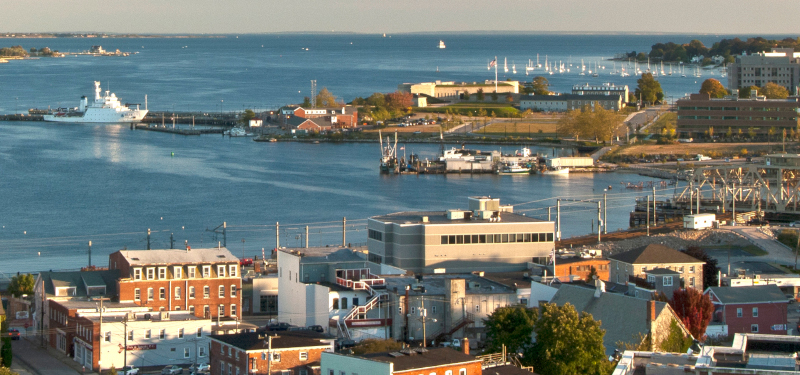
BVM: How does the City work to foster growth and change within the community?
Bombria: “A Community Development Block Grant (CDBG) was awarded to the City of New London on an entitlement basis from the U.S. Department of Housing and Urban Development (HUD). The principal objective of the CDBG program is the development of healthy communities by providing decent housing and a suitable living environment and expanding economic opportunities, principally for persons of low and moderate income. While the CDBG program is primarily intended for housing and public improvements, Congress passed legislation so that communities could provide funding for public service agencies and non-profits that support health and safety issues, job training, underserved youth, senior populations, the homeless, and for other economic development initiatives. The budget funds Neighborhood Enhancement which includes a Neighborhood Coordinator and the Blight Inspector position. Sustainable initiatives are supported through funding to F.R.E.S.H. Community Gardens and several maintenance and renovation projects.
“The City has successfully managed CDBG and Lead-Based Paint Hazard Reduction programs for many years. Maintaining the housing stock and significant community education programs have increased the number of children protected from lead poisoning and increased the number of housing units where health and safety hazards are mitigated throughout the city.
“The City has established working relationships with Energize Connecticut partners such as Eversource, CT Green Bank, and the Department of Energy funded Weatherization Program, for energy conservation measures to offset housing rehabilitation and lead program funds, thereby extending the dollars and allowing more to be accomplished in eligible resident’s homes. Once completed, these properties become eligible for weatherization work performed by the state-funded Community Renewal Team (CRT) to help people to reduce their home energy costs. CRT’s certified auditors visit homes to perform a Home Energy Assessment to determine energy saving measures for installation by pre-approved contractors. Typical services include: sealing air leaks and drafts, installing energy-saving light bulbs, and installing water-saving measures. The weatherization work may also include installation of insulation in attics and sidewalls, boiler/furnace replacement or repair, water heater assessment, as well as window repair or replacements and other services.
“Abandoned and underutilized properties abound in and around downtown New London. Reuse and redevelopment is challenged by the existence of environmental contamination. Because most of the City’s buildings were built prior to the 1940’s, materials used in the construction of these buildings are now considered hazardous materials and present special remediation and disposal problems. The City Brownfields program has been active in securing EPA and CT DECD Brownfields funding to assess and remediate brownfield sites since 2000. The importance of brownfield reuse and the recognition of the full range of economic benefits to the municipality, and to the region, have been identified as an important strategy in recently approved planning reports. The 2017 New London Plan of Conservation & Development (POCD) recognizes brownfields remediation as a priority for New London’s economic growth, which will help create new and diverse employment opportunities, increase the city’s tax base, and improve the quality of life throughout the city. To this end, an objective of the POCD’s Strategic Plan stresses the importance of continuing ‘concerted efforts to clean up contaminated brownfield sites prioritizing those adjacent to inland and coastal water resources.’ Additionally, the 2017 Comprehensive Economic Development Strategy for Southeastern Connecticut (CEDS) prepared by the Southeastern Connecticut Enterprise Region (seCTer) identifies ‘the redevelopment of existing infrastructure and resources, including, but not limited to brownfields and historic places’ as a significant standard and criteria to support and encourage the Principles of Smart Growth as defined by CT Public Act 09-230.
“The city is partnering with Groundworks USA for technical assistance in developing a network with deep local roots to work hand-in-hand with local residents to transform a vacant and contaminated property into a park and green space. This project will advance equity and inclusion and will work to counter disinvestment and create relevant community-driven change. The goal is to grow the next generation of environmental leaders by helping young people effect change in the environment and their community.”
“The City’s continued success in brownfields assessment and remediation, coupled with city programs and community partners collaborating will ensure ongoing efforts in accomplishing our goals of increasing economic development opportunities and creating more sustainable communities. Project clean-up planning will be geared toward future uses as outlined in City and Regional planning documents and the community outreach process.”
BVM: How does the City work to attract new businesses?
Tetteh: “One of the projects that we’re looking at is called the Thames River Innovation Place (TRIP). The purpose of TRIP is to build prosperity in the Thames River region through authentic innovation, collaboration, and diverse partnerships. TRIP is an unprecedented alliance of public, private, and non-profit sectors in the communities of New London and Groton in Southeastern Connecticut. Major institutions are collaborating to design a blueprint for the future of our communities that integrates existing plans and projects with new ideas that leverage and enhance all that is unique about this place at the mouth of the Thames River.
“Currently, there is a task force between the city of New London, the City of Groton, the Town of Groton, and some businesses within the communities to push the agenda. We have an RFP out for a place-making master plan for Hodges Square, which connects a bridge to Groton, which is on the other side of the river, to strengthen the sense of place within those two districts through economic development and creating a space that is true to the character of both districts. Thames River Innovation is supported by CTNext, a public private partnership that fosters an agile, open, and networked entrepreneurship community that helps Connecticut’s most promising startup and growing small businesses find the necessary resources to experience accelerated growth.
“The Ignite Program helps entrepreneurs solve their start-up challenges while making great connections. The Ignite Program, whose partners include BioCT Innovation Commons and Spark Makerspace, is a program established under the Thames River Innovation Place, and is made possible with support from CTNext. Ignite is designed to spur new ideas, businesses, and innovative growth in the Thames River region by producing events, sponsoring education, and connecting entrepreneurs into the business development support system.
“The City’s Office of Development and Planning provides business and property owners with a variety of incentives to defer or offset taxes, and also to provide grants and loans for building improvements, such as its Façade Improvement Program, which provides grants up to a maximum of $50,000 per single principal building fronting on a City street located within the downtown City Center District.
Bombria: “Electric Boat is the biggest industry in the area and the government just awarded EB several new submarine contracts, so the future is pretty sustainable there. It recently announced the expectation of hiring up to 18,000 new employees over the next ten years; and they already have more employees working there now than they’ve had for 25 or 30 years.
“As a result of the new contracts, there has been a lot of interest in private development housing projects and many have already gone through the pipeline of planning and zoning and have either started breaking ground or are working on financial arrangements. New housing projects will generate the foot traffic and critical mass leading to better opportunities for businesses to locate in New London.”
Nocera: “The City was also strategic in identifying three target census tracts for inclusion in the new federal Opportunity Zone initiative, which is attached to the Federal Tax Cuts and Jobs Act (December 2017), to invite investors with long-term capital gains to defer paying tax on those gains for a period of time, while investing in underserved communities that need capital.”
BVM: How does New London market itself?
Nocera: “The City of New London contracts with a local marketing consulting firm to market the city. The Office of Development and Planning is currently developing a complete “Developer’s Manual” for developers and investors. This manual will be the guide to New London for interested investors, with emphasis on investment from outside the local region.
“New London Main Street is a non-profit corporation committed to revitalizing New London’s Historic Waterfront District. The goal of Main Street is to build community through activities and programs that enrich the cultural fabric, preserve and enhance historic streetscapes, and support and expand the economic base of the city center. New London Main Street publishes the New London Map & Guide and hosts the city’s only tourism-related website.
“New London is well represented in the Southeastern Connecticut Cultural Coalition, which has more than 540 partners and contributes to the cultural identity, economy and quality of life of Southeastern Connecticut by advocating and supporting arts, heritage, cultural, and business activities and organizations.”
Check out this handpicked feature on Middlesex County, Ontario – We appreciate your business!
AT A GLANCE
WHO: New London, Connecticut
WHAT: A city of 25,000
WHERE: Southeastern part of the state, at the mouth of the Thames River
WEBSITE: www.ci.new-london.ct.us
PREFERRED VENDORS

Foxwoods Resort Casino – Foxwoods Resort Casino is a hotel and casino complex owned and operated by the Mashantucket Pequot Tribal Nation on their reservation located in Ledyard, Connecticut. Including six casinos, the resort covers an area of 9,000,000 sq. ft. The casinos have more than 250 gaming tables for blackjack, craps, roulette, and poker, and have more than 5,500 slot machines. There are several restaurants within the casinos, among them a Hard Rock Cafe. Foxwoods has two hotel towers, with a total of 2,266 hotel rooms; and a two-story game arcade for children and teens. The original tower, the Grand Pequot Tower, opened in 1997, while the second opened in 2008 as the MGM Grand; it was rebranded the Fox Tower in 2013. In 2015 a retail complex, known as Tanger Outlet Mall, opened between the two hotel towers with 85 stores for luxury goods. – www.foxwoods.com

